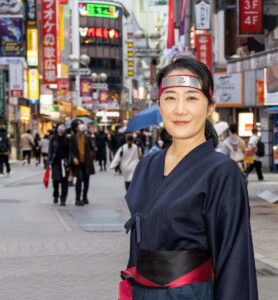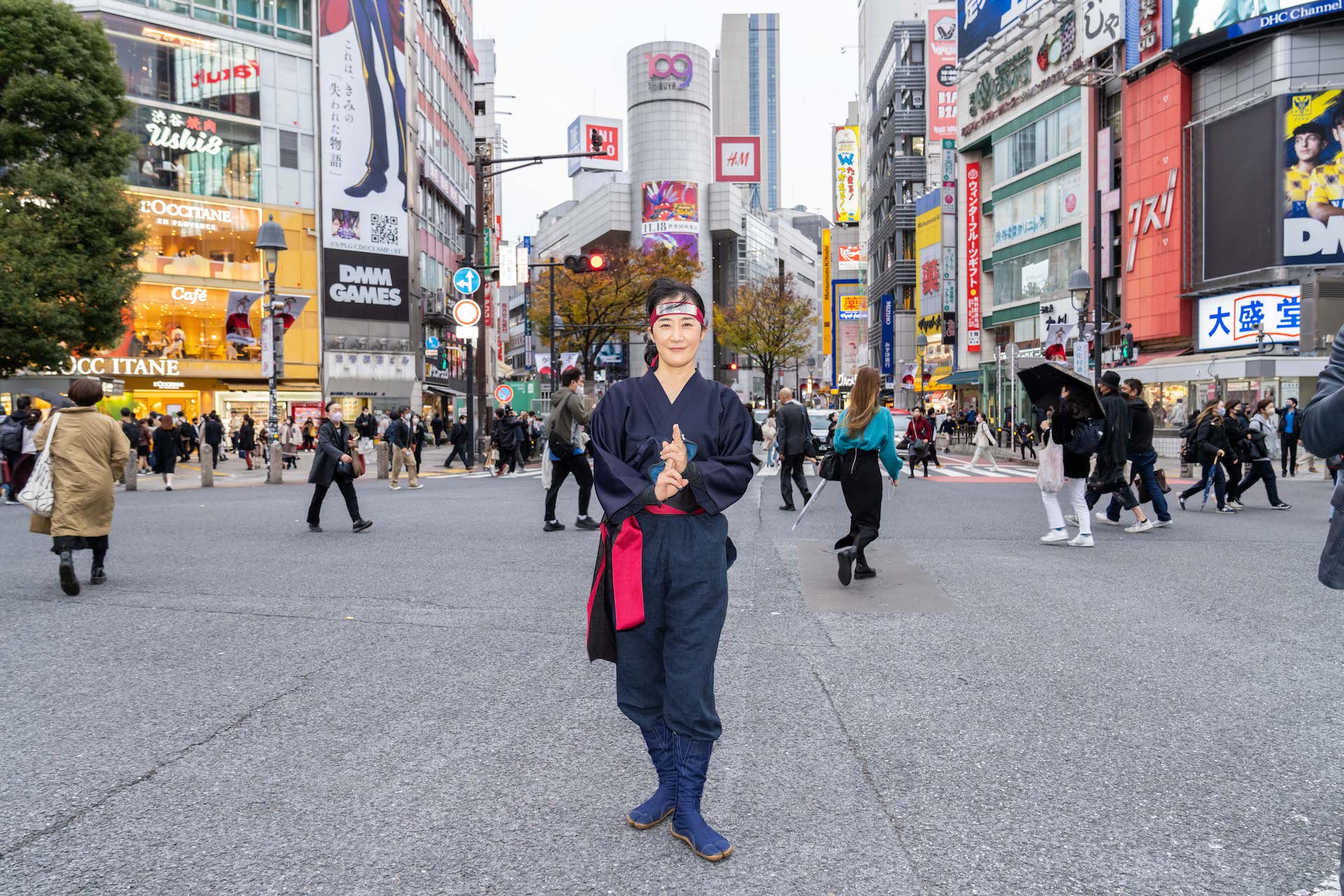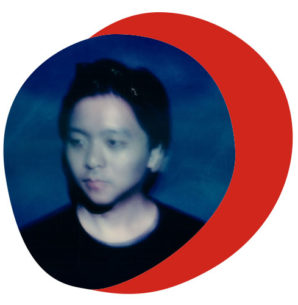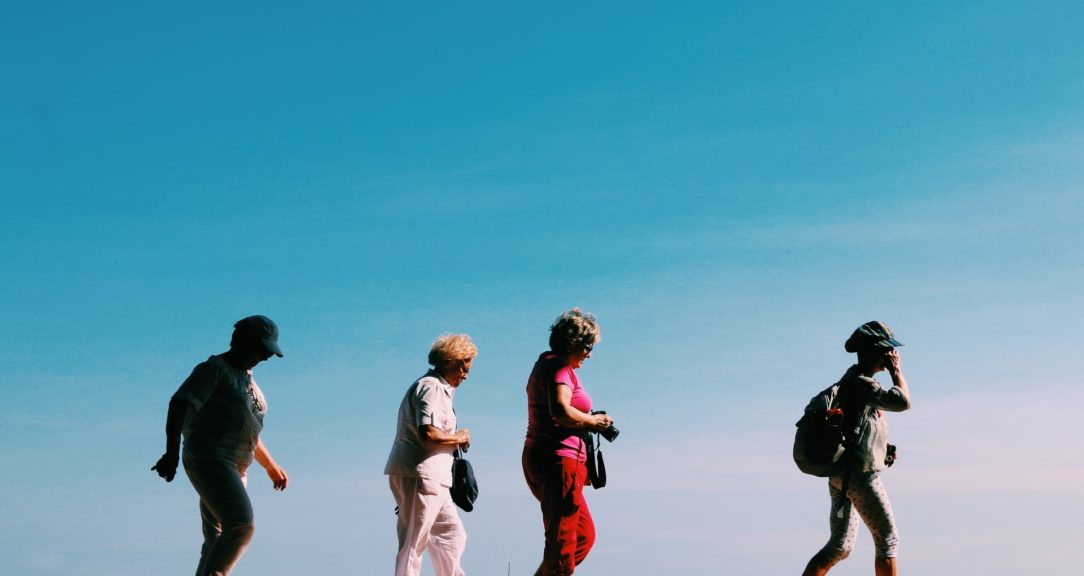A ninja is a figure shrouded in myth and legend. Popular culture depicts a limber person shrouded in black who performs gravity-defying acrobatics in order to complete covert acts of espionage or ambush. In video games, movies and TV series, they’re silent killers from another era, out of place in our modern world.
However, for full-time ninja Kuze, this exaggerated depiction distracts from the actual historical significance and skill that a ninja possesses.
Kuze, whose actual name is Rie Koshimizu, is passionate about educating people on the lives and tasks of real-life ninjas, by delving into the philosophy, spirituality and communication techniques that these master spies used to uncover valuable information.
“The flamboyant ninja images in the Ninja Turtles and other fictional works are creations of a later generation,” Koshimizu says. “In reality, the ninja’s main mission was to gather and pass on information, sometimes as mercenaries on special missions, but always in the shadows, out of sight and out of mind. They were masters of communication, disguising themselves as various professionals, taking time to gather information, avoiding conflict, and extracting information from any opponent.”
Koshimizu’s job is not only unique because of the rarity of a real-life ninja, but also because of her gender. Historically, the majority of ninjas were male. But female ninjas, known as “kunoichi,” carried out specific tasks.
There have been references to ninjas dating back as early as the 12th century. These highly trained spies were often mercenaries, recruited by warlords in feudal Japan to carry out acts of sabotage, infiltrate enemy camps, gather information and, in some cases, act as assassins. Yet the main task of a ninja was often that of espionage. And while the majority of the ninjas who carried out these missions were men, the kunoichi would provide important assistance.
A male ninja, for example, would go in and out of a castle in the guise of a trader, or spend months in front of the castle, disguised as a farmer or monk, and strike up a friendship with the gatekeeper to gather information.
The kunoichi, meanwhile, would assist the male ninja by infiltrating enemy organizations, gaining the trust of subjects, eavesdropping, and passing on information, or by providing access to homes and fortifications, rather than working in the open. Because men were often bound to the land they lived and worked on, women were able to move around more freely.
Becoming a modern-day ninja
Even today, the number of female ninjas is extremely small. The number of people working as ninjas throughout modern Japan is thought to be no more than 300. Around 20 of those are women.

Rie Koshimizu, who’s in her 50s, currently works in Yokohama, although she’s originally from Hiroshima. Because her husband is a marketing manager for a technology company, Koshimizu has lived in places including Toronto, Beijing, and Sao Paulo. Because she lived outside of Japan for so long, she began to long for a connection to her homeland and started immersing herself more deeply in Japanese culture and history, and to learn more about herself and her roots.
When she returned to Japan, she obtained a qualification as a primary school English teacher while working as an inbound customer service instructor. But her independent studies in Japanese culture continued, and she became fascinated by the folklore and legends surrounding ninjas and their adventures. She also began learning about the spiritual and philosophical beliefs that ninjas practiced, including a deep understanding of the natural world, human psychology and a mastery of physicality which included breathing exercises and mental strength training.
Fascinated by this aspect of ninja culture, she began attending a ninja school in Yokohama, called Shiki no Mori Ninjutsu Dojo, about five years ago. There, she trained in the women’s class under an experienced ninja master.
At the dojo, she trained in martial arts — such as Aikijujutsu — bodywork, osteopathy and body manipulation techniques. She describes one as “how to walk without bumping into the ground,” drawn from the traditional Kobudo Japanese martial strategies for stealth and combat. She also developed her mental training and became particularly interested in learning and teaching ninja communication techniques. She also released Ninja Gymnastics, a compilation of basic ninja movements for home workouts, on YouTube.
Five years ago, she started working for Elder, Tanaka & Associates Inc. The company offers consulting services and support for all manner of live entertainment events, including ninja performances. She has been working as a full-time ninja five days a week, with occasional work on weekends for events. Her working hours are flexible, but she’s usually on the clock from 11 a.m. to 6 p.m. In addition to demonstrations, Koshimizu’s duties range from clerical work, such as preparing documents and ninja-related informational content, to giving lectures on the history and culture of ninjas at various schools and other venues.
The start of the Covid-19 pandemic sent her, like much of the world, into a work-from-home situation. But there was plenty to be done — even ninjas have to do paperwork.
New work requirements
The lore around ninjas is so strong that they’ve been rumored to have supernatural powers, including the ability to become invisible or have control over natural elements such as water or air. The ninja is also famed for their cat-like acrobatics, twisting themselves into pretzels and leaping across buildings as if they were stepping stones. This image continues to be pervasive, along with the all-black clothing and masked face. But, as with many things, the truth is a little less spectacular.
As spies, ninjas had to blend in and not attract attention. Walking around in an all-black catsuit would have achieved the opposite. In fact, historians say that ninjas — when not disguised as monks, merchants or other people — usually wore navy-blue farmers’ clothing. Unassuming, unflashy and very hard to detect in the dark.
Koshimizu says that very few ninjas are actually capable of jaw-dropping acrobatic abilities, and a very small proportion of those are women.
I am not a ninja who sneaks into castles. Being a ninja is to sneak into people’s hearts.
Today’s ninjas have many different ways of working. There is a wide range of commitments, from one-off show performers and theme park employees to those who work full-time like Koshimizu and engage in educational presentations. In addition to martial arts performances, aspects of modern ninja work also include dojo management, education, tourism and historical research. Koshimizu’s favorite part of her job entails teaching about a ninja’s communication and self-management skills, both physical and mental.
Every ninja works multiple jobs to make ends meet, she says, much like the historical ninjas who’d often take assignments from multiple warlords and generals in order to make a living.
A freelance ninja can expect to earn up to 1 million Japanese yen (JPY, about $7,300) a year for working at events. A ninja who’s regularly employed can earn an annual salary of 2 million to 3 million JPY (about $14,600 to $22,000).
“I want to keep doing this,” she says. “My current goal is to monetize my current work. It is a constant learning curve. I am not a ninja who sneaks into castles. Being a ninja is to sneak into people’s hearts. I want to build nonconflicting relationships — not through brute force, but through intelligence and communication. I also want to survive like a ninja who does not draw his sword without hesitation; I think this is a timeless ability that is sought after in the world today. And I’ve finally found that in this job.”
Read more
Sign up to keep up to date with ReThink Q.







